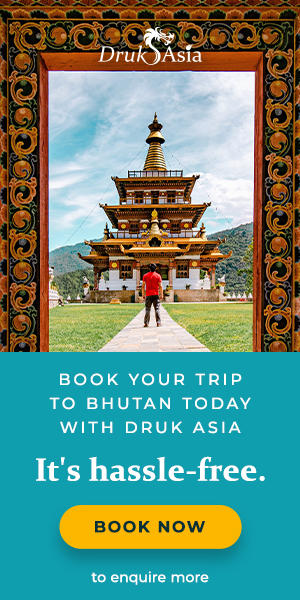Bhutanese Culture and Manners- What Makes You Bhutanese
With more exposure to the outside world, Bhutanese people take pride in driglam namzha as a unique identity of Bhutan and promote it not only as a righteous code of conduct but also as a marker of Bhutanese identity.
 Bhutanese couple at festival
Bhutanese couple at festival
Driglam namzha is the strict code of Bhutanese etiquette. Driglam namzha deals with eschewing crude and bad physical, verbal and mental behaviours and adopting civil and courteous conducts of the body, speech, and mind. Thus Driglam is categorised into three disciplines.
Driglam namzha was introduced in Bhutan by its founder, Zhabdrung Ngawang Namgyel, a Tibetan lama and military leader who sought to unify Bhutan not only politically but also culturally. There is no set of written rules about the driglam namzha, but it has been followed since olden days and passed down from generation to generations. It plays an important part in religion, as well as in the daily lives of laymen. This system is widely known and followed in the country.
In Bhutan, there is a strict code of etiquette that is expected to be followed by all Bhutanese and respected by foreigners. Bhutanese are taught to behave in a manner that is respectful of superiors and elders. Most Bhutanese will shake hands with a foreigner but the average Bhutanese will bow while greeting, the deepness of the bow depends on the rank of the person bowed to. All Bhutanese wear ceremonial scarves or kabney for formal occasions or red scarves or Kabney for formal occasions or to visit Dzong or monastery. Women wear small red scarfs or rachu made of cotton or silk with embroidered flowers or patterns on it.
The Bhutanese people are friendly and extremely hospitable and sharing of gifts while visiting your host's house is normal. Elders believe that it is not a good omen to go to someone’s place empty-handed, thus gifts are much encouraged. When you arrive at someone’s house you will be settled comfortably in the best seat and then serve you with food and drink.
Bhutanese drink Suja (butter tea), ngaja (milk tea) or ara. Ara is a strong locally made spirit from rice, wheat or barley and maize. Sometimes it's heated and an egg is added that has been lightly fried in butter. It is considered polite to decline at first but the host or hostess will insist and will continue to offer.
Meals consist of rice, red or white. Some dried meat and vegetables, if available and chills. Ema Datis, chillies and cheese is a staple all over Bhutan. Bhutanese generally eat on the floor or chairs at home but hardly ever eat at tables in the western fashion unless in restaurants. Under driglam namzha, we should not start eating before high officials and eldest in the family eat. And also, one should not sit with crossed legs if one is seated on a chair.
The head is considered the most sacred part of the body; the foot is most impure. Do not touch another person’s head or point your feet at anyone or towards something holy. Walk around a Stupa (chorten), temple, prayer wheel or prayer flag in a clockwise direction. While going to the temple Dzong or monastery, it is good to bring a package of incense and butter to make an offering. One must remove shoes and hats before entering the monastery or temples.
Recently two days Driglam Namzha Refresher programme was conducted for the Ministery of Education employees with the main objective was to create awareness and educate adequately through theory and practices on Driglam Namzha and Bhutanese culture and tradition and to promote and strengthen its practices on a daily basis at any place.




